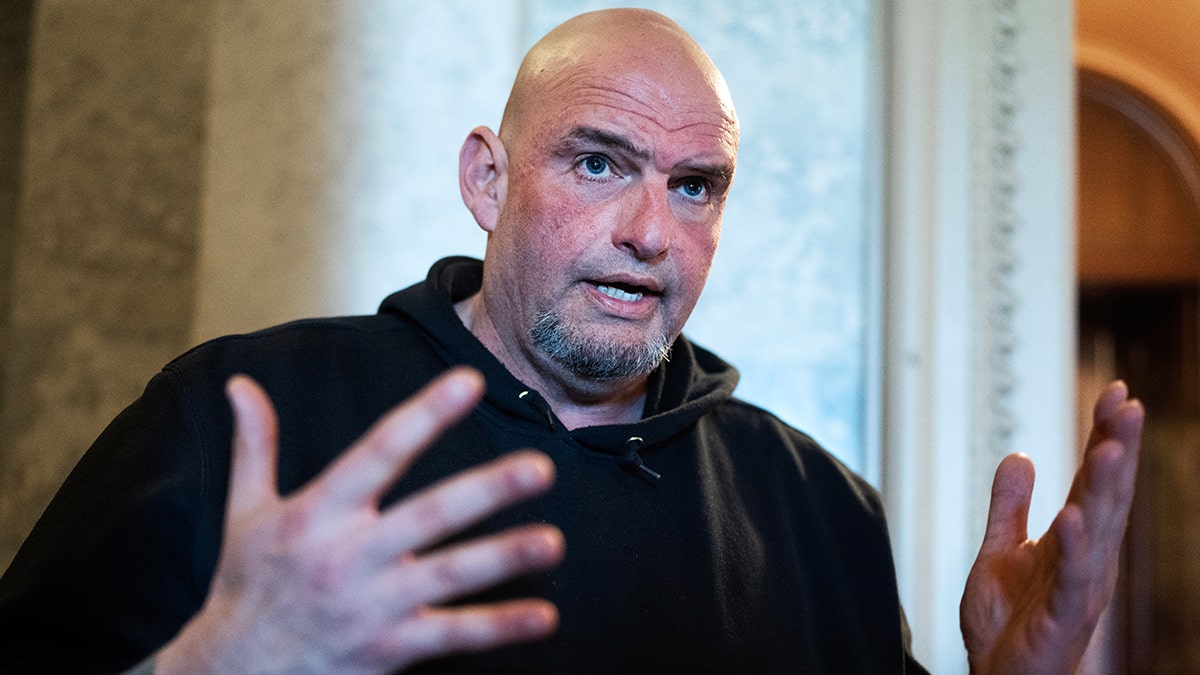Politics
Women make up nearly half of the California Legislature, setting a new record in Sacramento

SACRAMENTO — Even in a state known for crafting first-in-the-nation progressive laws and leading on reproductive rights, men have long outnumbered women in the California Legislature.
The Capitol’s male-dominated culture was evident when hundreds of women spoke out about sexual harassment during the #MeToo movement. Then came the shocking image of a masked lawmaker carrying her newborn into the Assembly chambers during the depths of the COVID-19 pandemic because she was denied a request to work remotely after giving birth.
It wasn’t until 1989 that a woman wore pants on the Senate floor, after a fed-up lawmaker defied the Capitol dress code on a cold day in Sacramento.
But now gender equality in California’s Capitol is nearer than ever, after voters elected a record number of women to the Legislature. When lawmakers are sworn in on Dec. 2, women will hold 59 of the Legislature’s 120 seats.
“They have an opportunity to exert power in a way that hasn’t been done before,” said Susannah Delano, executive director of Close the Gap California, which works to elect progressive women. “There’s a difference between lip service and good policy that is really vetted by the people who are going to be impacted, and women have a track record of powerful listening and inclusive, responsive solutions.”
The new record, with women holding 49% of legislative seats, marks a vast increase over the last decade. Women’s representation in the California Capitol is up from nearly 31% in 2020 and 25% in 2016, according to the Center for American Women and Politics. In 1980, just 9% of California state lawmakers were women.
For years, California has lagged behind other states — including Nevada, Arizona and Colorado — when it comes to legislative gender equity.
The change in Sacramento was fueled in part by major turnover in the Legislature this year, creating new opportunities for candidates to run without challenging an incumbent. More than a dozen of the newly elected women won seats held by men, many of who were forced out of office by term limits.
It comes after a majority of Californians voted for Vice President Kamala Harris over former President Trump and some are still reeling from the loss of what could have been America’s first female president.
Newcomer Sade Elhawray, a Democrat from South Los Angeles who is replacing termed-out Assemblymember Reggie Jones-Sawyer, is among the record number of women who will meet for a special legislative session in Sacramento next month to devise new ways to shield the state from Trump’s federal agenda.
She pointed to Trump’s history of sexual misconduct allegations that include a jury finding him liable for sexually abusing advice columnist E. Jean Carroll, which Trump has described as a “made-up, fabricated story.”
“Women in the Legislature are really going to be on the front lines as we look to both hold Trump accountable and protect Californians from all the things that might happen. I think we have to suit up,” Elhawray said. “We still suffer from the evils of sexism in such a real way.”
While Democrats are praising the gender gains as a way to further secure liberal priorities such as abortion rights, Republicans are also celebrating.
Suzette Valladares, a former assembly member who is replacing termed out Sen. Scott Wilk (R-Saugus) for the Santa Clarita Valley Senate seat, said working moms like her are well positioned to address Californians’ escalating concerns over the cost of living because they are attuned to family budgets and child care fees.
“When I served in the Assembly, we had a women’s caucus that truly was bipartisan. We made a conscious effort to support each other’s bills,” she said. “I think it’s going to produce some amazing pieces of policy.”
It’s hard to say if the shakeup in the Legislature will produce tangible reforms. California has already passed equal pay laws that do more to close salary gaps between men and women than most states and is home to the most stringent sexual consent requirements.
But some priorities of the Legislative Women’s Caucus have stalled as California faced a multibillion dollar budget deficit, including a bill that would have expanded Medi-Cal coverage of diapers vetoed last year by Gov. Gavin Newsom, who cited cost concerns.
Marva Diaz, a political strategist who mostly represents female candidates, said identity politics remain important to California campaigns despite the drubbing Democrats took nationally in this election, in part due to Trump’s strategy of appealing to young men.
“You recognize that you are different and that you are missing at certain tables. We need more women CEOs. We need more women in the business sector,” Diaz said. “I think that it’s going to take women in the Legislature in order to make that progress.”
The California Legislative Women’s Caucus was formed in 1985 and its founding members include Democratic Rep. Maxine Waters, a trailblazing and powerful member of Congress, and Rose Ann Vuich, the first woman elected to the state Senate who was known to ring a bell each time her colleagues in the Capitol addressed members as “gentlemen.”
State Sen. Toni Atkins (D-San Diego) made history in 2018 when she became the first woman and the first openly LGBTQ+ person to serve as the leader of California Senate. She was the first woman to lead both houses of the state Legislature, having also served as speaker of the Assembly.
Now, she’s one of three women who have declared a run for governor in 2026.
Only men have ever served as California governor. Atkins said it is overdue for voters to put a woman in the state’s highest office, and not just for representation purposes.
“I think it matters that there are women in this race. I actually think women govern differently,” Atkins said. “I think we think about the bigger picture.”

Politics
Video: What to Know About Trump’s New Travel Ban

President Trump on Wednesday signed a travel ban on 12 countries, primarily in Africa and the Middle East, reviving an effort from his first term to prevent large numbers of immigrants and visitors from entering the United States. Hamed Aleaziz, who covers the Department of Homeland Security and immigration policy for The New York Times, explains what we know and don’t know about the ban.
Politics
Fetterman disses Dems for suddenly embracing Musk amid Trump fallout

NEWYou can now listen to Fox News articles!
Maverick Democratic Sen. John Fetterman dissed members of his own party Thursday for suddenly backing Elon Musk during his feud with President Donald Trump.
Democrats have found an unlikely ally in Musk this week, given his public rejection of Trump’s “big, beautiful bill” and a subsequent call for Trump’s impeachment.
The president has championed the legislation as fulfilling his key campaign promises, including border security, American energy production and tax cuts.
The megabill is under consideration by both a Republican-led White House and Congress. But it has faced hiccups in the Senate this week as Republicans, including some who helped pass the bill through the House, have indicated they do not support the bill in its current form. Every House Democrat voted against the bill.
ELON MUSK WARPATH AGAINST TRUMP’S ‘BIG, BEAUTIFUL BILL’ RATTLES HOUSE GOP
Sen. John Fetterman, D-Pa., (left) said Democrats should make up their minds about Elon Musk. (Reuters; Getty Images)
The national debt is at $36,214,501,400,213.64 as of June 5, according to the latest numbers published by the Treasury Department.
GOP SENATORS EXPRESS ‘CONCERNS,’ ‘SKEPTICISM’ OVER TRUMP’S SPENDING BILL AFTER MUSK RANT
Amid the setbacks, Musk has thrown a wrench into the Republican’s reconciliation process through a series of fiery posts on X, the platform he bought in 2022. And Democrats were quick to coalesce behind Musk’s rejection of the bill, seizing on the GOP’s intraparty conflict despite their outright rejection of Musk and his Department of Government Efficiency (DOGE) this year.
In the first of several posts targeting the bill, and then Trump directly, Musk said, “I’m sorry, but I just can’t stand it anymore. This massive, outrageous, pork-filled Congressional spending bill is a disgusting abomination. Shame on those who voted for it: you know you did wrong. You know it.”
Fetterman, who has built a reputation for bucking his own party on issues like immigration and support for Israel, was quick to call out the inconsistency of his fellow Democrats Thursday.

Sen. John Fetterman, D-Pa., talks with a reporter after a Senate luncheon at the U.S. Capitol March 11, 2025. (Tom Williams/CQ-Roll Call, Inc via Getty Images)
“The Dems, we’ve been dumping all over Musk and vandalizing Teslas or whatever, and now, suddenly, we might be more back into him,” Fetterman said.
Democrats began staging protests at Tesla dealerships early into Trump’s second term. Tesla vehicles and dealerships have also been targeted this year in a string of violent attacks against the company, another business owned by Musk. Trump’s Justice Department labeled the attacks “domestic terrorism.”
And while the Pennsylvania Democrat said Musk is right for rejecting Trump’s megabill, Fetterman said Thursday Democrats have to decide what they think of Musk and stick with it.

Elon Musk holds the key to the White House, a gift he received from President Donald Trump, at a press conference in the Oval Office at the White House in Washington, D.C., May 30, 2025. (Reuters/Nathan Howard)
“It wasn’t that long ago that Tesla was like the virtue-signaling kind of accessory for Dems,” Fetterman said. “I would never want to vandalize Teslas, and the ‘big, beautiful bill’ is wrong for America. So, from my perspective, I’ve just tried to be consistent through that.”
Rep. Ro Khanna, D-Calif., was one Democrat who acknowledged this week that Democrats should work with Musk on their shared objective to stop Trump’s “big, beautiful bill.”
And GOP Rep. Tim Burchett piled on the criticism of Democrats’ inconsistencies, telling Fox News Digital, “It’s kind of ironic to me that, a week ago, the Democrats hated Elon Musk’s guts … and now they’re basing everything they have on him.”
Fox News Channel’s Chad Pergram and Fox News Media’s Dan Scully contributed to this report.
Politics
Supreme Court rules discrimination laws protect all equally, including 'majority group' members

WASHINGTON — The Supreme Court ruled Thursday that the nation’s anti-discrimination laws apply equally to all employees, regardless of whether those complaining of bias are white or Black, gay or straight.
In a short and unanimous opinion, the justices rejected as outdated and mistaken the view that “members of a majority group” must show more evidence of discrimination before they can sue and win.
Instead, the justices said the Civil Rights Act of 1964 has always prohibited workplace discrimination against “any individual” who suffers discrimination because of race, color, religion, national origin and sex, including sexual orientation.
The law “draws no distinctions between majority-group plaintiffs and minority-group plaintiffs,” Justice Ketanji Brown Jackson said.
The ruling revives a discrimination lawsuit brought by Marlean Ames, an Ohio woman who said she was demoted and discriminated against by a lesbian who became her supervisor. She was then replaced by a gay man who had less experience.
Ames is a heterosexual woman. She sued her employer, the Ohio Department of Youth Services, and alleged she was discriminated against because of her sexual orientation.
But a federal judge rejected her discrimination claim, and the 6th Circuit Court in Cincinnati affirmed that decision. In doing so, the judges said she could not point to “background circumstances” or statistical evidence suggesting that hers was the “unusual employer who discriminates against the majority.”
Law students at the University of Virginia Law School appealed her case to the Supreme Court. They pointed out that the 6th Circuit and several other courts continue to use an outdated, two-track approach to discrimination claims.
This is not the standard in much of the nation, however. For example, they said the 9th Circuit Court based in California does not follow this approach, which would require more proof of discrimination from whites or men or heterosexuals.
But the law students said the court should hear the Ames case and clarify the law nationwide.
Although the case did not directly involve DEI, or diversity, equity and inclusion, it gained added attention because of President Trump’s drive to rid the government of DEI policies.
Jackson said the Supreme Court for more than 50 years has steadily rejected the view that discrimination laws apply differently to different groups of people.
In Griggs vs. Duke Power in 1971, “we said that ‘[d]iscriminatory preference for any group, minority or majority, is precisely and only what Congress has proscribed.’”
A few years later, the court rejected the two-track approach, she said, “holding that Title VII [of the Civil Rights Act] prohibited racial discrimination against the white petitioners in th[at] case upon the same standards as would be applicable were they Negroes.”
Lawyers for the Biden and Trump administrations had urged the court to overrule the 6th Circuit and make clear there is no double standard for deciding discrimination claims
In a concurring opinion, Justice Clarence Thomas noted the “majority” in the workplace differs by workplace.
“Women make up the majority of employees in certain industries, such as teaching and nursing, but the minority in other industries, such as construction.”
“Defining the ‘majority’ is even more difficult in the context of race,” he wrote. “American families have become increasingly multicultural, and attempts to divide us all up into a handful of groups have become only more incoherent with time.”
The court’s ruling in Ames vs. Ohio Department of Youth Services said the Ohio court should reopen and reconsider Ames’ claim of discrimination.
Experts in discrimination law said the decision will have an effect in some regions but not others.
“As a practical matter, more ‘reverse discrimination’ lawsuits may survive a motion to dismiss,” said Evan Parness, an attorney at the Covington law firm in New York.
Although the decision doesn’t significantly change how federal district courts in California operate, it has implications for some courts in other parts of the country that require the higher burden of proof, said Elizabeth Beske, professor of law at American University in Washington.
The “background circumstances” rule was first applied in D.C. courts, after a white man sued the Baltimore and Ohio railroad company arguing he was discriminated against when jobs were instead given to Black and female applicants. The court held that “it defie[d] common sense to suggest that the promotion of a Black employee justifies an inference of prejudice against white co-workers in our present society.”
Columbia Law professor Olatunde C. Johnson said the “opinion is not surprising. It depends on a straightforward and sensible statutory reading of Title VII. The 6th Circuit’s ‘background circumstances’ approach was not typical, so I don’t expect the case to dramatically change employment discrimination litigation on the ground.”
Brian McGinnis, an attorney with the firm Fox Rothschild, said because the decision was unanimous, which is rare, it shows an uncontroversial and “pretty straightforward” perspective that there is no historical basis in case law for requiring extra proof from white, heterosexual or other majority groups.
And it represents an effort by the court to streamline and eliminate the need for additional steps in litigation, he said.
There is some question as to how the change is applied, but McGinnis doesn’t expect any issues.
“There is some potential for mischief, but I don’t think it will have much change on the day-to-day operations of many employers or courts,” McGinnis said. “The short answer is, it should not change much.”
Savage reported from Washington and Hussain from Los Angeles.
-

 Politics1 week ago
Politics1 week agoTrump admin asking federal agencies to cancel remaining Harvard contracts
-

 Culture1 week ago
Culture1 week agoCan You Match These Canadian Novels to Their Locations?
-

 Technology1 week ago
Technology1 week agoThe Browser Company explains why it stopped developing Arc
-

 News1 week ago
News1 week agoHarvard's president speaks out against Trump. And, an analysis of DEI job losses
-

 News1 week ago
News1 week agoRead the Trump Administration Letter About Harvard Contracts
-

 News7 days ago
News7 days agoVideo: Faizan Zaki Wins Spelling Bee
-

 World1 week ago
World1 week agoDrone war, ground offensive continue despite new Russia-Ukraine peace push
-

 Politics5 days ago
Politics5 days agoMichelle Obama facing backlash over claim about women's reproductive health













